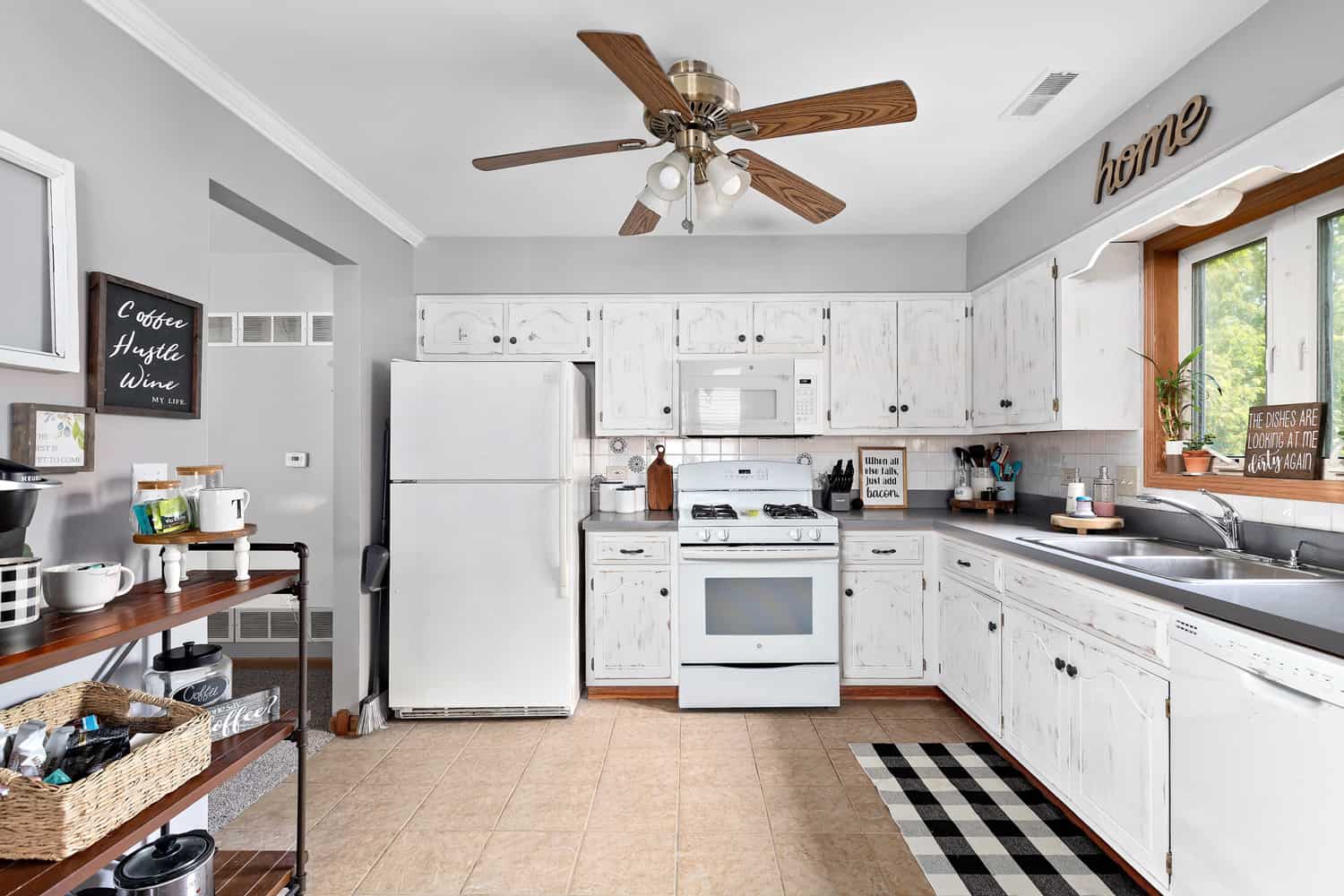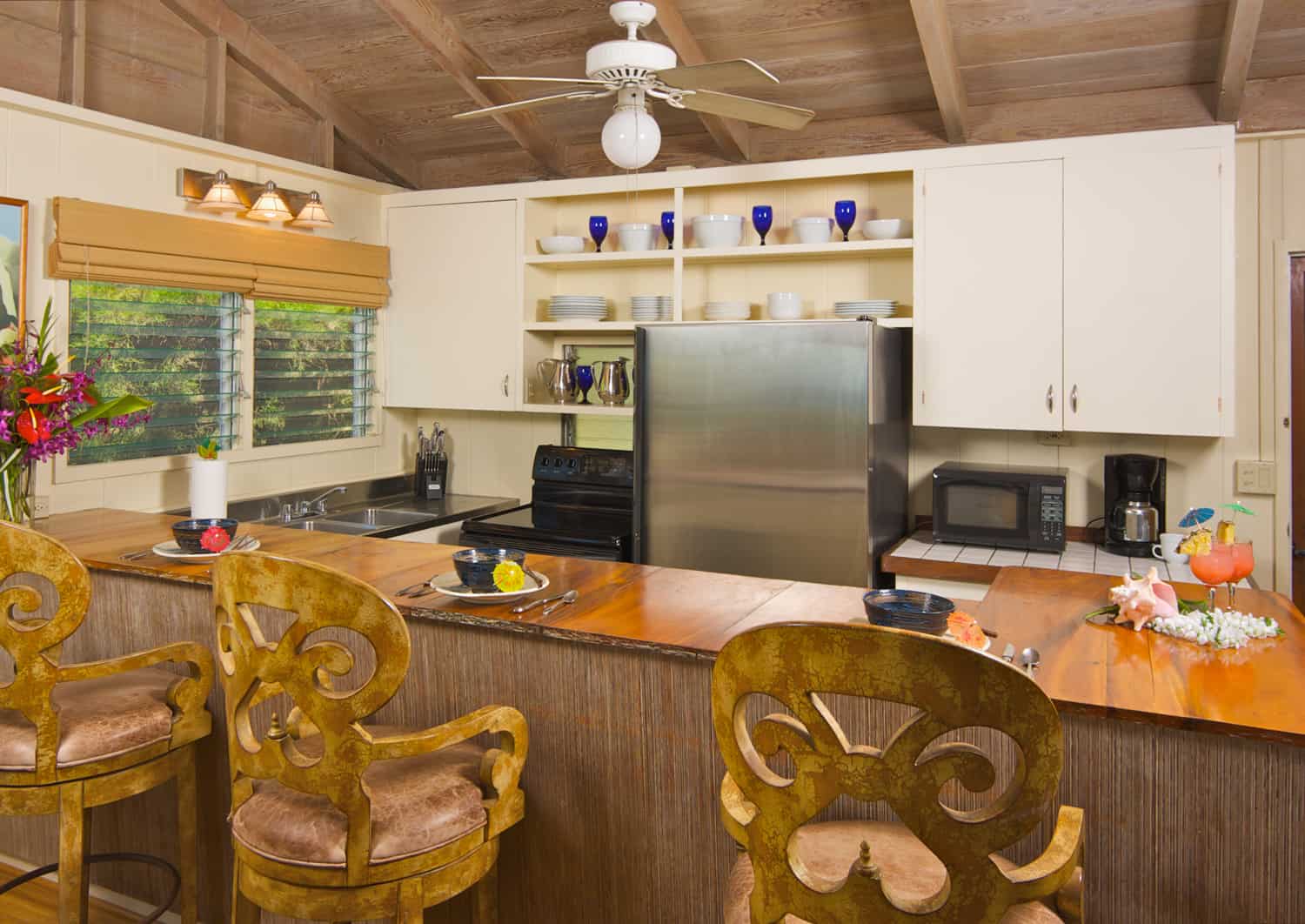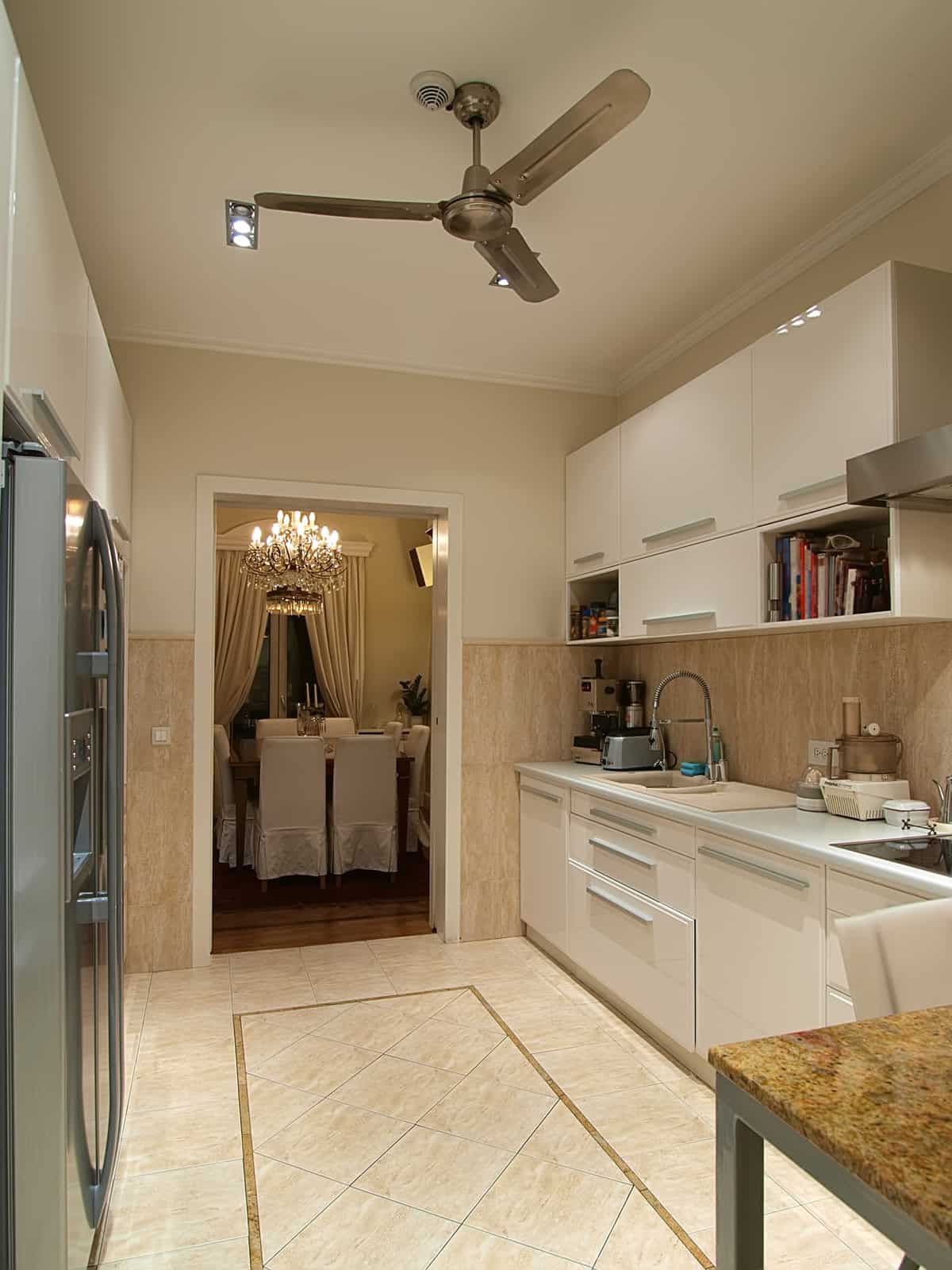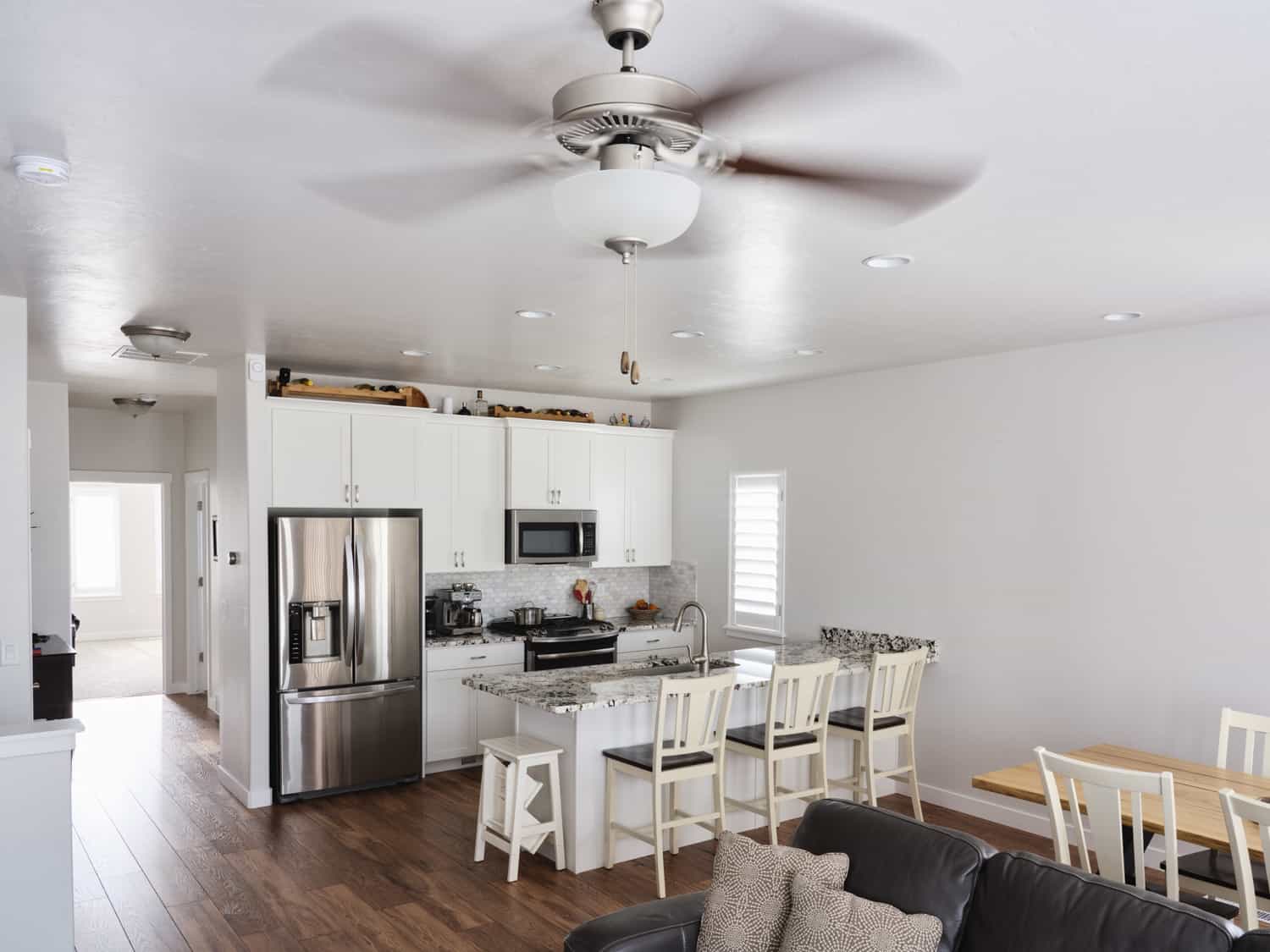Are you getting confused about whether or not you should put a ceiling fan in your kitchen? You are in luck since you have come into the right place! We have consulted the experts, and the answer is already in our pockets.
If you want to retain a comfortable temperature in your kitchen, you should install a ceiling fan. The temperature in your kitchen increases when you are cooking, so a ceiling fan can assist in circulating the air and maintaining a pleasant temperature.
It would be best if you continue reading until the end of this post to know more about its benefits and drawbacks, including the things you should consider before installing a ceiling fan in your kitchen.

Benefits of Installing Ceiling Fan In The Kitchen

If you don't feel comfortable enough in your kitchen when cooking, installing a ceiling fan is ideal. A ceiling fan's benefits include:
Cooling Benefits
One of the main benefits of a ceiling fan is a comfortable temperature. It keeps the temperature balanced and as cool as possible while you are in the process of cooking. It helps to circulate the air in your entire kitchen. And it also clears all the cooking smells.
Can Remove The Smoke
The ceiling fan will significantly help eliminate the smoke and the hot steam coming from what you are currently cooking. And it does its purpose as quickly as possible.
Can Contribute To Energy Efficiency
Running a ceiling fan in your kitchen can help minimize your monthly energy cost. It is an affordable and excellent way to lower the temperature in your kitchen. Instead of switching your air conditioner, you can use the ceiling fan for a lower energy cost. Know that energy star certified ceiling fans are available on the market.
Provides Additional Light
Some ceiling fans are installed with a light. These ceiling fans are a great option if you want to increase the brightness in your kitchen. There is a wide array of designs and styles available on the market that you can choose from.
Drawbacks of Ceiling Fan In The Kitchen

You should not install the ceiling fan in some random place. You need to place it somewhere in your kitchen strategically and carefully. Doing so will help you achieve the best comfort.
The Installation Is Tricky
Before you install the fan in your ceiling, make sure that there is an available, accessible electrical connection. Doing it is somehow tricky. You should check your attic or crawlspace to find out if there is an electric connection. If there is none, you need to call an electrician to install one.
Moreover, the height of your kitchen ceiling will also be a factor when you install a ceiling fan. Bear in mind that a ceiling fan should hang at least seven to eight feet above the head. If your kitchen ceiling is too high, you may need to install a rod before attaching the fan.
The Fan's Reach Is Limited
Another drawback of a ceiling fan is its limited reach. It simply means that the ceiling fan will not reach the whole kitchen area but only certain areas. You will feel less air when you stand farther from the ceiling fan. It can usually be a problem when you have ample space in your kitchen.
Noise Issues
Ceiling fans are noisy when they are rotating. And if they are not appropriately installed or not level, they can produce an irritating sound. The only way to avoid this is to hire a professional to install the ceiling fan correctly.
Installing A Ceiling Fan In The Kitchen
There are a few things that you should consider beforehand when incorporating a ceiling fan in the kitchen:
1. Style
Your choice of a ceiling fan will depend upon your decorating taste and the kitchen setup. You can choose from lots of designs and styles on the market. As mentioned above, there are available ceiling fans installed with light and have innovative features.
There are two types of ceiling fans, and they are:
Retractable Blade Fans
People who prefer a minimalist style and aesthetic taste usually buy this ceiling fan for their kitchen. Just in case you don't need to use your ceiling fan, you can retract it anytime you want and save more space. It is indeed something flexible.
Check out this 36" retractable blade ceiling fan on Amazon.
Traditional Ceiling Fans
When you compare this ceiling fan type with the retractable one, it offers so much more ventilation, although it is inferior to the latter when it comes to ventilation efficiency.
As much as possible, choose a ceiling fan that you think will perfectly fit and blend your kitchen theme.
Check out this 44" ceiling fan on Amazon.
2. Controls
Keep in mind to always consider the ceiling fan's features before purchasing. Choose one that is energy-efficient and user-friendly. You may also want to find a variant that features a setting for making downdraft and updraft. Remote-controlled models are available if you want an easy operation for your ceiling fan.
3. Placement
The most significant item to remember is this factor. Always try to consider where you are to put the ceiling fan. Please choose a location in the kitchen where it won't touch any hanging light fixtures. In addition, your ceiling fan should also have enough distance from the overhead cupboards.
4. Functionality
It would be best to choose a ceiling fan that you think can work well and effectively get the air moving quickly to cool off the entire kitchen area. Purchase one with steep and long angle blades since it can circulate better air than a fan with flat and short blades.
Choosing The Appropriate Ceiling Fan Size For Your Kitchen

The fan size you will need to purchase will depend on the size of your kitchen. You shouldn't just put a fan randomly. It is all about measurement if you want to achieve excellent ventilation results. Read the tips below:
The Size Of The Kitchen Area
Measure the square footage of your kitchen to determine the appropriate blade sweep size of the ceiling fan. You will need to calculate the length and width of the perimeter in case your kitchen is inside a larger room. Doing so will help you specify the end reach of the ceiling fan.
Height Of The Ceiling
Measuring the height of the ceiling will aid you in specifying what size of the ceiling fan is appropriate for your kitchen, as well as the height of the down rods you are going to use. The lower the ceiling, the shorter rods you will need.
Air Circulation
Decide if you want your entire kitchen to receive air circulation or just some specific areas. You will need to install multiple fans or a larger ceiling fan to cool the entire kitchen.
Sizing Samples of the Ceiling Fan and Kitchen Area
Here is a sizing guide we made for your reference:
75 square foot kitchens will need a 29" to 36" fan
Check this 30" ceiling fan on Amazon.
76 to 144 square foot kitchens will need a 36" to 44" fan
Check this 36" ceiling fan on Amazon.
145 to 224 square foot kitchens will need 44" to 50" fan
Check this 48" ceiling fan on Amazon.
225 to 400 square foot kitchens will need a fan over 60"
Check this 60" ceiling fan on Amazon.
In Summary

Now that you have found out that you can and should install a ceiling fan in your kitchen might as well consider having one now. You will no longer be at a loss with its excellent benefits. Let alone make your kitchen area have a pleasant and comfortable temperature. Don't prolong installing one. Give it a try and let yourself enjoy its benefits!
For further reading, you might want to check these articles out. We'd love to help you more!
Best Epoxy Coating Products For Concrete Floors [7 Fantastic Choices]






